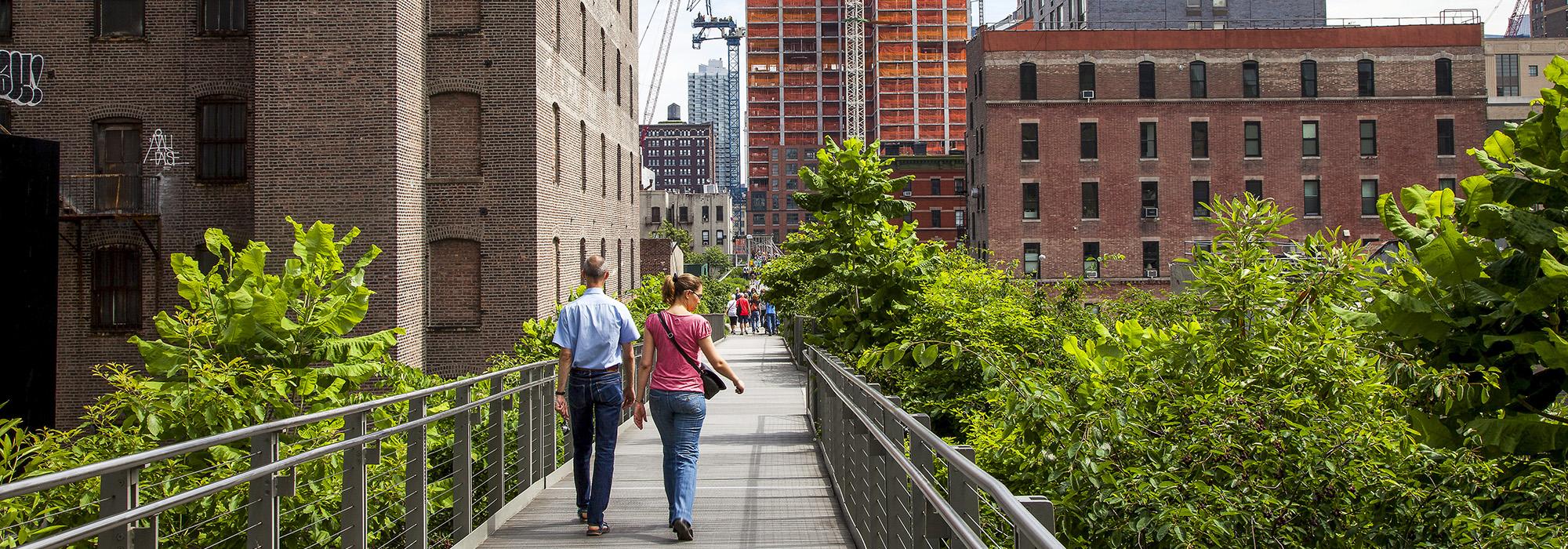Redesigning Design to Make Room for Landscape
Here's a game I like to play. Try to find decent criticism about landscape architecture, planning and design, particularly regarding public space, in any of the major US dailies. Go ahead... I'll wait while you think about that.
Actually it's no game... it's a problem, especially considering the role that landscape architecture and planning plays in shaping our communities and cities. We have no shortage of architecture critics (who on occasion cover landscape), and there are a fair number of garden writers, but criticism about landscape architecture, planning and design is essentially restricted to publications geared to professionals, and largely absent from major dailies.
For example, The New York Times, for many the paper of record, often provides probing, cogent and entertainingly written criticism of books, movies, television, the fine arts (Roberta Smith is a must read!), dance, theater, architecture... even video games, with coverage frequently given to shows, exhibitions and projects in places like Fort Worth, London, San Francisco, and Dubai.
So why add landscape architecture to the list? Well, it's a discipline based on a distinctly different mindset. Mark Rios, both a licensed landscape architect and architect, noted, "Architects are trained to design objects... Landscape architects look at voids, space, and systems... They deal with bringing spaces together."
Currently, architecture criticism can secure precious real estate on the Times' front page, while landscape architecture is frequently shunted to the Times' Home section. A decade or so ago, that wasn't so bad, but their editorial priorities have changed. Now landscape architecture is being crowded out by articles about reorganizing closets, new mops, heirloom gourds, the cult of garlic cloves, when to prune shrubs, or growing mushrooms at home (for the record, I have nothing against garlic, mushrooms or the pruning of shrubs).
To be fair, the Times has provided extensive coverage of the High Line, and the development controversies at Lincoln Center, the Atlantic Yards in Brooklyn and Ground Zero, and they do have T, their style magazine. Still, the language of design coverage can be confusing. For example, discussion of landscape often focuses on what's in bloom. That's like analyzing the significance of a new Jean Nouvel building by focusing on its doorknobs. The distinction between object and system, to borrow from Mark Rios, is ill defined. Michael Cannell, publisher of thedesignvote.com and a former editor of The New York Times' Home section provides some insight here: "Over the course of the last fifteen years the raging economy was very good for design —it lifted many boats. However, design was positioned to be synonymous with consumerism, and design over the long booming economy came to be something we saw in stores." We lost sight of the fact that design helps "solve problems and contribute to the common good." He's hopeful in the post-recession there will a new mindset in which design is not limited "to things that you buy with your credit card — should take up the challenge. Why New York? Historically, the city has been seen as a leader in the field of landscape architecture, both for places created and the people who created them — pioneers such as Frederick Law Olmsted, Sr. and Calvert Vaux in the 19th century, and Gilmore Clark and Michael Rapuano in the 20th (they designed the parks, parkways, and exposition grounds usually attributed to their client, Robert Moses). In this decade, several notable landscape architects including Michael van Valkenburgh (Cambridge, MA), George Hargreaves (San Francisco, CA) and Mark Johnson (Denver, CO), have expanded their practices and relocated to New York while Ken Smith Workshop, James Corner Field Operations (they did the High Line) and W Architecture + Landscape Architecture, all New York-based firms, have established and grown internationally influential practices. This is not to disparage the exceptionally talented landscape architects working in Boston, Minneapolis, San Francisco, and elsewhere. It's recognition of the opportunities provided by the concentration of talent in one place.
So will design coverage in New York and elsewhere transcend traditional buildings as objects (Zaha's latest) or industrial design (sleek toasters and iPhones) and recognize the new possibilities that public landscape offers? The time is now for mainstream print and web to pick up on the signals in this white noise, because the future resides in systems-based design solutions that affect our everyday lives in new and sometimes unconventional ways. If not, design remains marginalized as a commodity and the public is poorly served.
This Birnbaum Blog originally appeared on the Huffington Post website on December 27, 2010.



